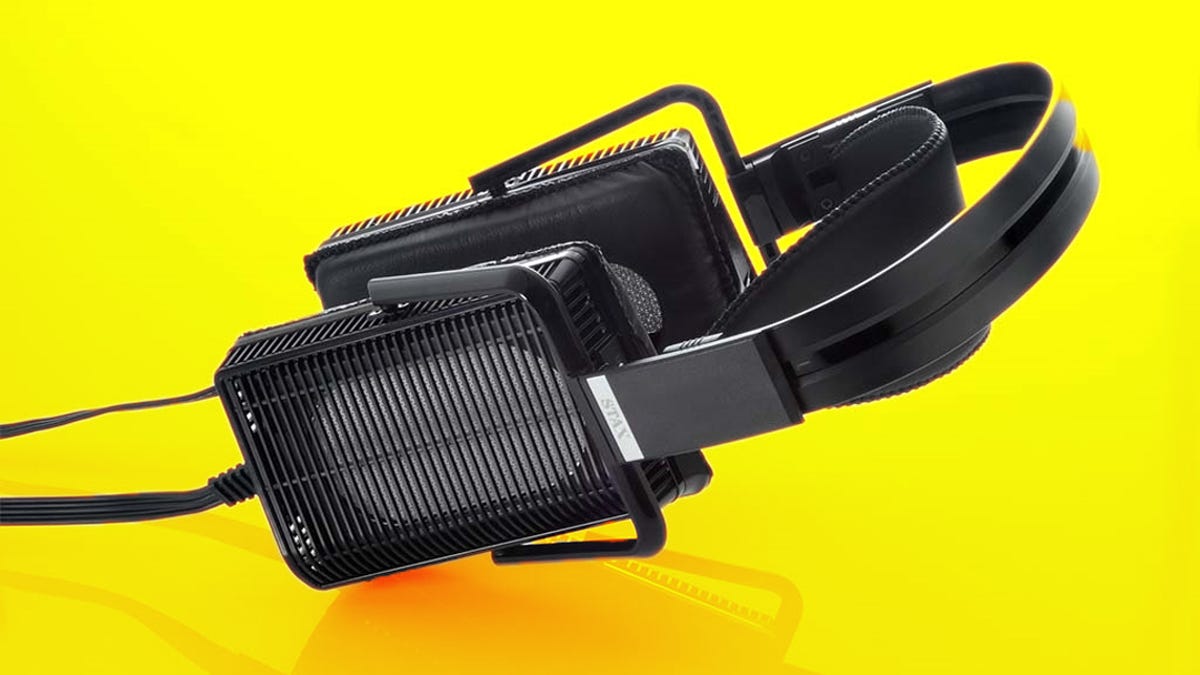The new kings of clarity: Stax SR-L500 headphones
The Audiophiliac dons the Stax SR-L500 electrostatic headphones and marvels at their sound.

If you want to hear your music with the utmost clarity, Stax electrostatic headphones are the way to go, and their SR-L500 ($700, £545) would be a great place to start. Trust me on this, if you've never heard an electrostatic headphone you'll be in for a shock! The sound is dramatically clearer than any conventional headphones you ever heard. Stax has been designing and building electrostatic headphones in Japan since 1960.
Stax SR-L500 headphones
Electrostatic headphones use a completely different technology than what you'll find in any Beats, Bose, Beyerdynamic, Grado, Sennheiser or Sony headphone that uses "dynamic" drivers that look like miniature speaker drivers. Electrostatic drivers have an ultra-thin electrically charged diaphragm suspended between two perforated metal plates (electrodes). When the sound signal is applied to the electrodes, the diaphragm moves between the two electrodes, producing sound. Electrostatic headphones produce lower distortion and cleaner sound than dynamic headphones.
Listening to Belle and Sebastian's "The Third Eye Centre" album, the SR-L500 all but disappeared, the sound is just that much more open and spacious than what I get from a top-notch dynamic headphone like the Sennheiser HD 700. Once you hear the difference it's hard to return to dynamic headphones.
There are a few significant caveats with electrostatic headphones: they must be used with specially designed headphone amplifiers and cannot be plugged into a standard 3.5mm or 6.3mm headphone jack. Stax offers a range of amps for their headphones, plus other manufacturers, including Woo Audio, make electrostatic headphone amps. Electrostatic headphones wouldn't be my first choice for lovers of rock or any bass heavy music. But with violinist Yehudi Menuhin's performance on Beethoven's "Violin Concerto" the SR-L500's effortless resolution was put to good use. Classical recordings sound more natural and vivid than they do over dynamic headphones.
The SR-L500 is an open-back, over-the-ear design, comfort levels are excellent, and its high-quality synthetic leather pads applied only moderate pressure on my ears. This is an easy headphone to listen to for hours at a time.
Stax SR-L500 electrostatic driver
I also compared the SR-L500 with my Audeze LCD-2 planar-magnetic headphones, which also use large, thin film drivers, but the LCD 2 doesn't require a dedicated headphone amplifier. As much as I like the LCD 2 it was no match for the SR-L500's uber clarity, the LCD 2 was less transparent, less vivid and spacious than the SR-L500. But the LCD 2's bass was deeper and more powerful, and dynamic impact were all better than the SR-L500's. So the LCD 2 was a better choice for rock, and the SR-L500 excelled with acoustic music of all genres. That's not to say I didn't enjoy the Black Keys' low-down dirty blues over the SR-L500, I did, but listening over the LCD 2 headphones was a more visceral experience.
I used a Stax SRM-353X ($925, £895) headphones amp for all of my SR-L500 listening tests; Stax sells the SR-L500 headphones and SRM-353X amp bundled together in the SRS-5100 system, it's $1,650, £1,395. Stax also offers a range of matching headphone amps, with prices starting at $425, £445 for the Stax SRM-252S amp that you can use with the SR-L500 headphones.

